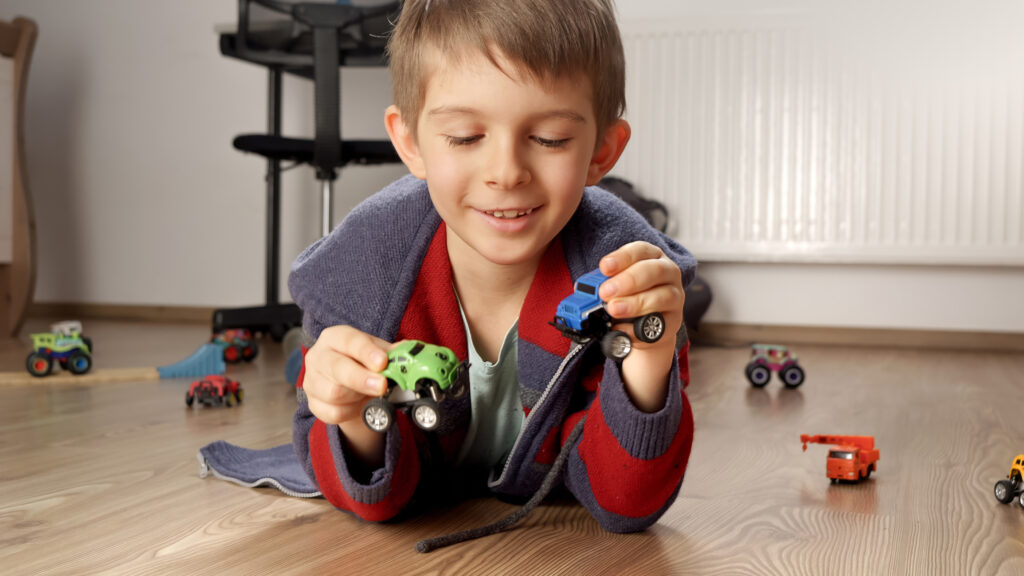
As guardians, we want the best for our children, especially when it comes to playtime. Toys are not just a source of entertainment; they are essential tools for development, encouraging imagination, learning, and motor skills. However, the safety of these toys must always be a top priority. While toys can bring joy and developmental benefits, they can also pose risks if not chosen carefully.
In 2020 alone, more than 198,000 children were treated for toy-related injuries, with over 67,000 of those injuries involving children under the age of 4, according to the Consumer Product Safety Commission (CPSC). These statistics emphasize the importance of careful consideration when selecting toys for children, especially young ones. This guide will help you navigate toy safety and ensure that playtime remains safe and enjoyable for your child.
1. Check Age-Appropriate Labels
One of the most effective ways to ensure toy safety is by paying attention to age-appropriate labels on packaging. These labels are not just recommendations, but they are also guidelines based on developmental stages and safety standards. Toys designed for older children may contain small parts, sharp edges, or other features inappropriate for younger kids. For example, children under the age of 3 are at a higher risk of choking on small toy parts. Sticking to the recommended age labels, you may help alleviate these risks.
The CPSC advises that toys intended for children older than 3 should not be given to toddlers or infants due to the potential for choking hazards from small parts . Keeping this in mind is important for preventing easily avoidable injuries.
2. Avoid Small Parts and Choking Hazards
Choking hazards are one of the most common causes of toy-related injuries, especially for children under the age of 4. Toys with detachable small parts, buttons, or beads can become dangerous if swallowed. When selecting toys for younger children, it’s important to look for items that are too large to fit entirely into a child’s mouth. The CPSC defines a small part as anything that fits within a cylinder measuring 1.25 inches in diameter and 2.25 inches long, which is roughly the size of a child’s throat .
Be aware when purchasing toys with detachable pieces, especially for toddlers, who may not fully understand the risks associated with placing small objects in their mouths.
3. Beware of Magnets and Button Batteries
Magnets and button batteries are among the most dangerous toy parts. While they may seem harmless, these small items can cause serious internal injuries if swallowed. Magnets can attract each other within the body, leading to blockages or tears in the intestines, while button batteries can cause severe chemical burns when lodged in a child’s esophagus.
Experts advise parents to avoid toys with small magnets and batteries unless the pieces are securely sealed and cannot be removed by a child. Toys that require button batteries should only be used by older children who understand the importance of handling them carefully.
4. Evaluate Noise Levels
While loud toys might seem entertaining, they can pose a risk to a child’s hearing. Constant exposure to loud noises, especially from toys that produce sounds exceeding 85 decibels, can cause hearing damage over time. The American Academy of Pediatrics recommends that toys should not emit sounds louder than 85 decibels when measured from a distance of about 10 inches, the typical length from a child’s ear to a toy.
When purchasing toys, consider options that allow for volume control or have noise levels appropriate for young ears. If the toy seems too loud, it’s best to be cautious and choose a quieter alternative instead.
5. Inspect Used or Hand-Me-Down Toys
Hand-me-down toys can be a wonderful way to recycle and save money, but they require extra care. Older toys may not meet current safety standards or may have degraded with time, leading to the risk of broken pieces, sharp edges, or hazardous materials like lead paint. Before giving a second-hand toy to your child, inspect it for any signs of wear and tear, and check for recalls to ensure the toy remains compliant with today’s safety regulations.
6. Stay Up-to-Date on Recalls
Regularly checking for toy recalls is one of the most effective ways to ensure your child’s toys remain safe. A reminder of the importance of this came in the recent recall of over 2 million Fisher-Price Snuga Infant Swings due to a suffocation hazard, following reports of five infant deaths. Even the most well-known brands should be researched for potential safety threats. The swings, which were initially considered safe, unfortunately led to these deaths, and the recall highlights the importance of staying informed about the products your child uses.
Parents and caregivers are encouraged to visit the CPSC website regularly to check for updated recall lists and review the toys they have at home. In this way, you can ensure that your child’s toys meet the latest safety standards and avoid preventable risks.
7. Supervision and Safe Play Practices
Even with all safety precautions in place, supervision is crucial during playtime, especially for younger children. Children may use toys in unexpected ways or accidentally misuse them, leading to potential injuries. Ensuring that your child is playing in a safe environment and using toys as intended can prevent many common toy-related incidents.
Toy safety is not a topic to be taken lightly. While toys provide many benefits for a child’s development, they can also pose serious risks if safety is not a top priority. By following guidelines such as checking age-appropriate labels, avoiding small parts and choking hazards, and staying aware of recalls, parents and guardians can reduce the chances of toy-related injuries. Taking these steps helps ensure that toys remain sources of joy and learning, not harm.
For more information on toy safety, visit the Consumer Product Safety Commission website and KidsHealth’s guide on safe toys .
